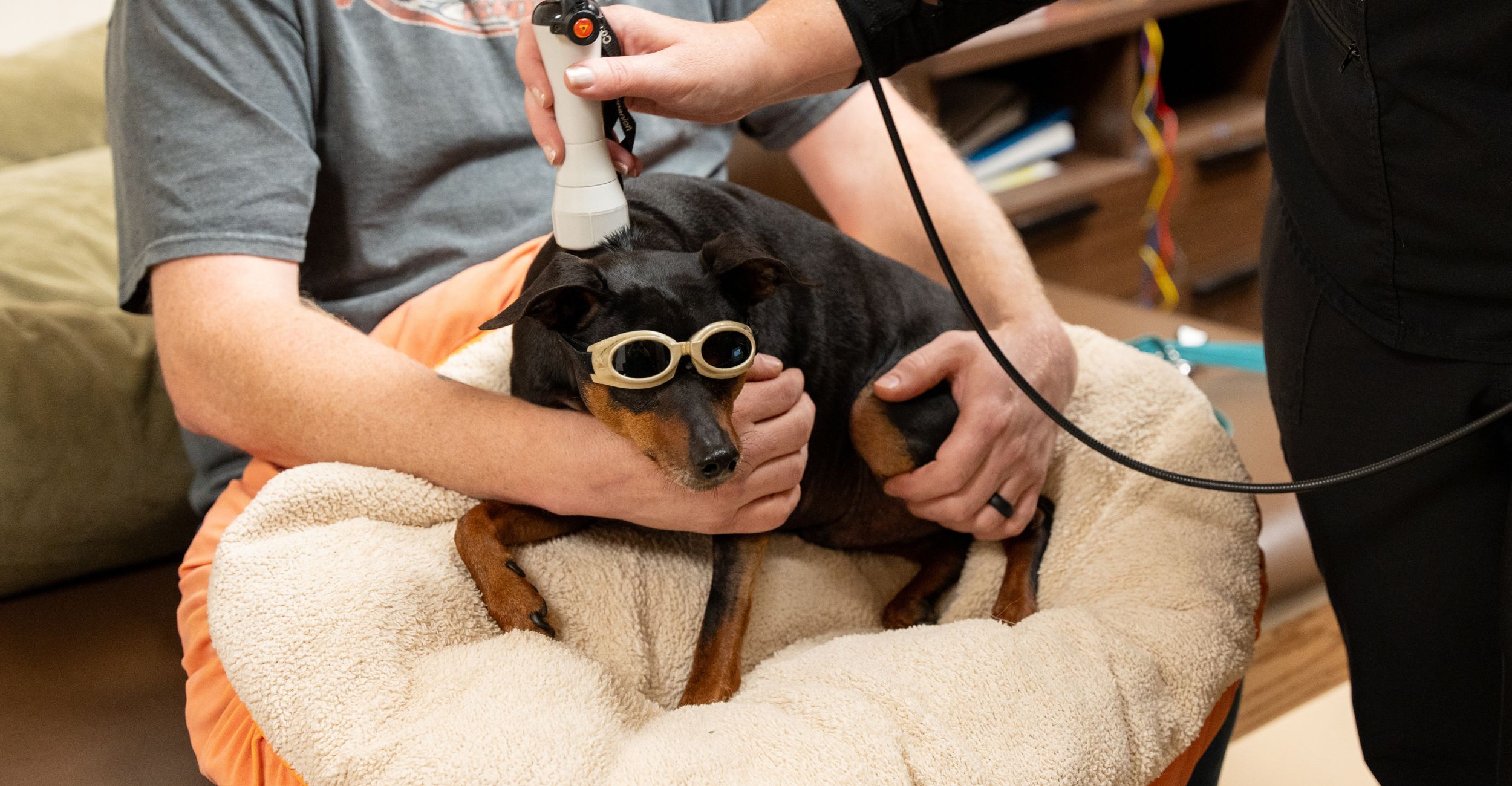
Caesar's success: Miniature pinscher making recovery from stroke
Monday, March 4, 2024
Media Contact: Kinsey Reed | Communications Specialist | 405-744-6740 | kinsey.reed@okstate.edu
Imagine coming home from work to find your perfectly healthy, beloved pet unable to sit or walk. This was reality for Ammie Bryant one evening.
Caesar, an 8.5-year-old miniature pinscher, was rushed to the Oklahoma State University Veterinary Medical Teaching Hospital when he was found unable to walk. Upon arrival, Dr. Leandro Fadel and Dr. Flora Okwuagwu were the clinician and intern on call. Caesar was quickly admitted to emergency and critical care where Fadel and Okwuagwu ran a series of tests and monitored him throughout the night. After ruling out a variety of diagnoses, Caesar was said to have had a spinal stroke as a result of a fibrocartilaginous embolism.
Fadel said while dogs can recover from FCE, it would be a long road ahead for Caesar. Fadel cautioned that he may never be fully back to “normal,” but he could likely regain his mobility. However, it would probably take months for his brain to reform the neural pathways that had been interrupted by the FCE in his spine. The good news, his cognitive skills were all fine.
After three days in the intensive care unit, clinicians agreed Caesar could go home to start the recovery process, but checkup appointments would be required. After a day of resting at home, Caesar was brought back to the teaching hospital where he would start his first round of acupuncture and laser therapy with Dr. Lara Sypniewski. She advised Bryant to get Caesar a harness to help him stand and walk with support. In return, this would help him learn to use his legs again.
Sypniewski advised that Caesar have laser therapy every day for two weeks and acupuncture once a week. She said they likely wouldn’t see much recovery for at least two months. In addition to treatments, Bryant was instructed to exercise with Caesar at home to ensure his muscles didn’t atrophy. After his first laser therapy treatment, Caesar was already making remarkable progress.
Later that evening, Caesar was up and running. Although it wasn’t a completely coordinated run, it was an improvement they didn’t see coming so soon.
“We were absolutely shocked,” Bryant said.” “We thought it would be months before we saw him walk on his own.”
The next day, Bryant brought Caesar back to the hospital for more treatment. He was able to walk into the hospital without any assistance. After eight days of uncertainty and multiple treatments of acupuncture and laser therapy throughout the weeks to come, Caesar was making great strides to recovery.
While his recovery journey isn’t over, he is beating the odds. Now, five months since the stroke, Caesar is almost fully recovered.
"We are so grateful to have had excellent care at the Teaching Hospital where we were provided with encouragement, hope and the tools needed to help Caesar recover,” Bryant said.
She also said that Caesar has always been active, and if you didn’t know he had the stroke, you would never guess it had happened.
